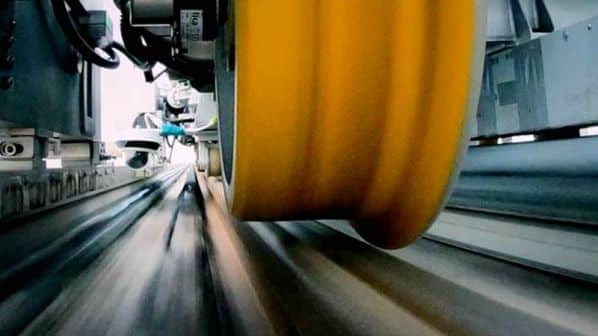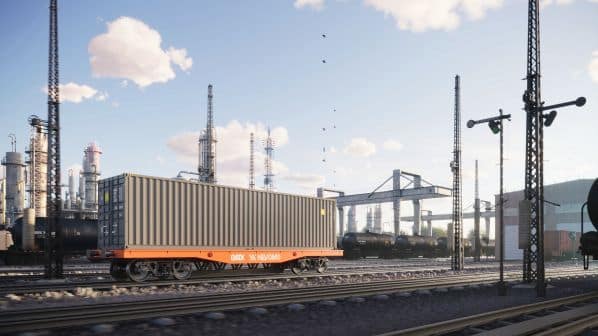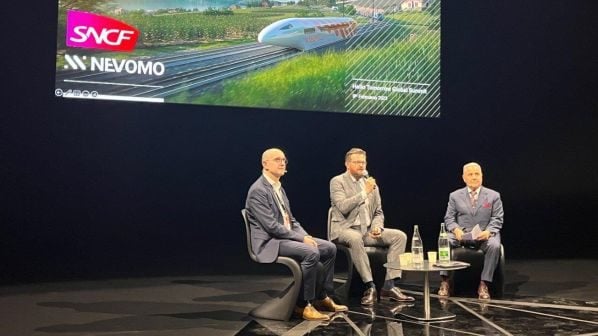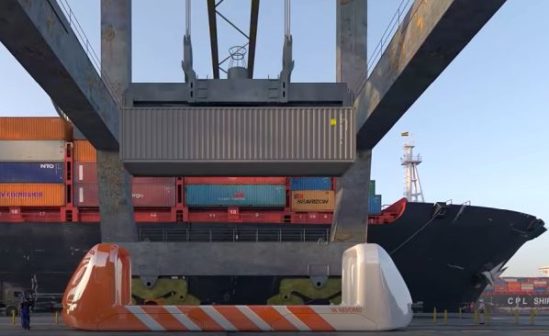NEVOMO, Poland, announced on September 5 that it has successfully completed tests of its MagRail technology that enables trains to levitate and be propelled by linear motors without friction on conventional infrastructure.
The company says that this is a world first and marks a turning point for the railway industry, bridging the gap between existing steel wheel on steel rail technology and ultra high-speed systems such as hyperloop.
Nevomo is developing new lightweight bogies equipped with levitation magnets and a linear motor, and during trials on a 720m section of the company’s test track at Nowa Sarzyna in Poland, MagRail vehicles reached a speed of 135km/h while demonstrating stable levitation and magnetic guidance.
A 6m-long vehicle weighing 2 tonnes began levitating at just over 70km/h, accelerating from a stand to 100km/h in 11 seconds.
Under the MagRail system, a linear motor stator would be installed between the running rails and a levitation beam mounted outside the rails on each side of the track. Nevomo says that trains would be able to operate at up to 300km/h or up to 550km/h on high-speed alignments, offering performance comparable with hyperloop trains operating in a vacuum.
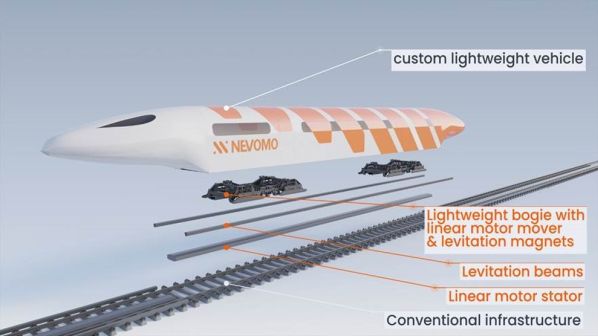
MagRail is described as an “evolutionary revolution” by Nevomo CEO and co-founder, Mr Przemek Paczek. “We are not reinventing the wheel, we are upgrading an excellent system that has been efficient for centuries,” he says.
With faster, frictionless operation “we can more or less double capacity,” Paczek says. “With MagRail we can get a network effect immediately because it’s interoperable,” he adds, pointing out that conventional railway rolling stock would still be able to use existing lines equipped with MagRail.
According to Paczek, the cost of installing MagRail would be in the range of €9m to €10m per km. The new system would enable faster journeys from city centre to city centre, without the high cost and lengthy timescales involved in building new infrastructure.
Following three-and-a-half years of research and testing, Nevomo says that the latest successful trials pave the way for pre-commercial operating pilots with its industry partners, which include French National Railways (SNCF) and Italian infrastructure manager RFI.
Freight booster
Nevomo is also working with wagon leasing company GATX on the development of the MagRail Booster system, which uses linear motors to move freight wagons without the need for locomotives. The first commercial version of the system is expected to be available in 2024.
MagRail Booster is intended to enable autonomous wagon movements within ports and other terminals, to provide an alternative to overhead electrification where clearances are tight, or to boost tractive effort when freight trains are tackling steep gradients.
For the development of MagRail technology and testing, Nevomo has raised €11m of funding, comprising €5.5m in equity and €5.5m in non-dilutive grants from the European Union (EU). In 2022 Nevomo was awarded an additional €17.5m by the European Commission (EC), comprising a grant of €2.5m and €15m in equity.
“Today marks a landmark moment in Nevomo’s development,” says Paczek. “For the first time in railway history, a rail vehicle moved not on the existing tracks, but over them, without friction.
“By leveraging existing infrastructure, we offer a cost-effective and environmentally-friendly approach to modernising rail transport, in line with European Green Deal objectives.”
